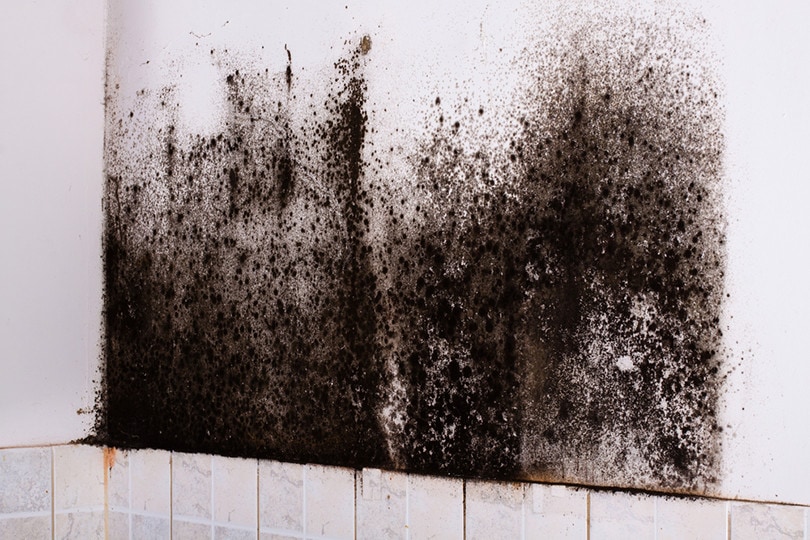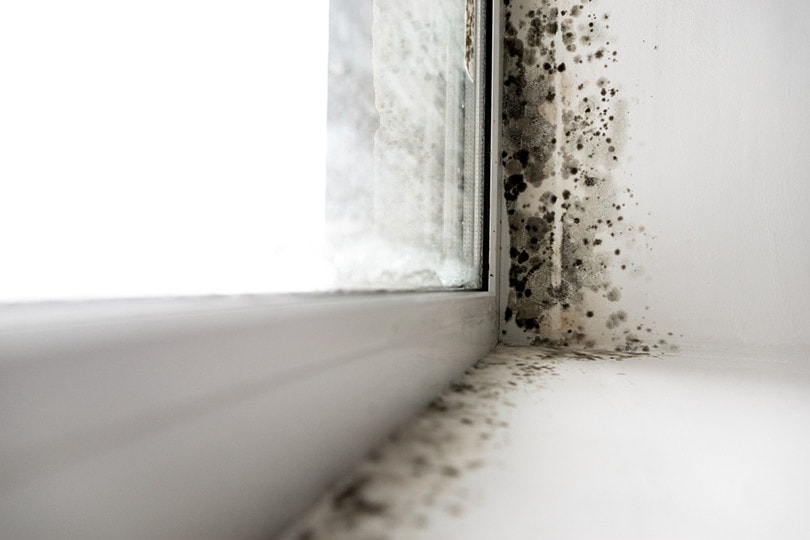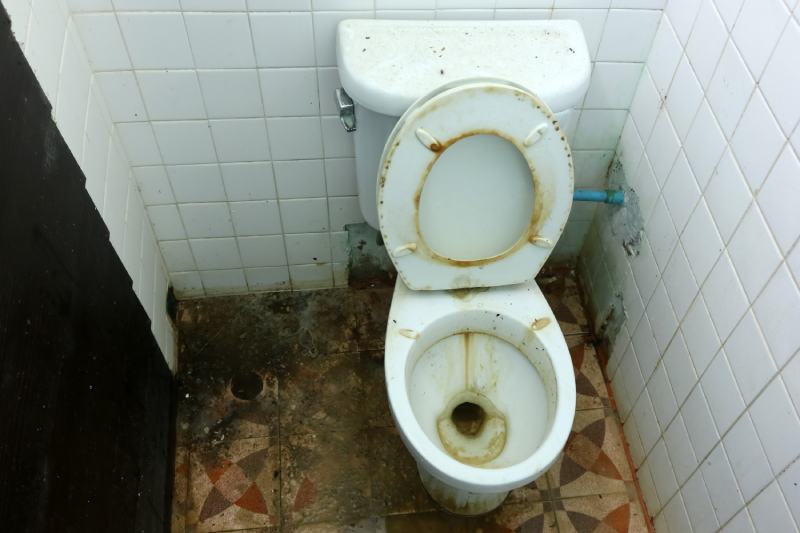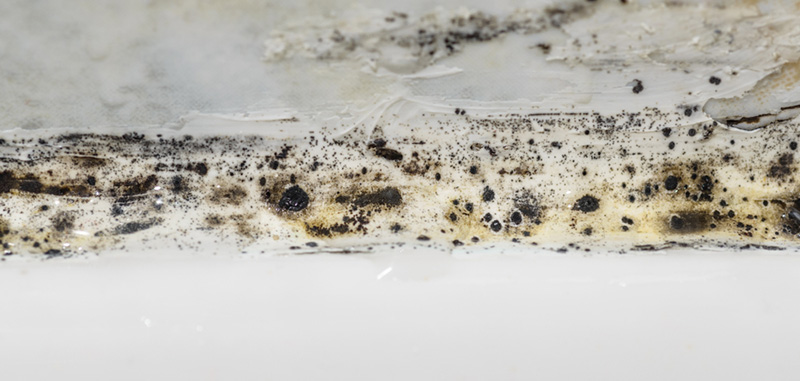Is Black Mold in the Shower Dangerous? Symptoms, Prevention & FAQs
-
- Last updated:

A shower is a place to relax after a hard day at work. It’s also an environment where we feel 100% safe. However, if there’s black mold there, you need to sound the alarm. While certain types of mold aren’t dangerous, black mold can most definitely harm you, especially if you’re allergic to it. Sneezing, coughing, and a runny nose are just some of the side effects.
This guide will cover the main symptoms, how much harm they can cause, and what you can do to get rid of black mold. We’ll also talk about how to spot it, prevent it, and check whether you’re exposed to this fungus. This is an issue that you shouldn’t take lightly. So, let’s learn how to handle it!

The Definition of Black Mold
A microscopic form of fungi, black mold can be found in the soil and on plants, but mostly, it grows in fiberboard, drywall, paper (wallpaper, for example), and any cellulose-rich materials. Black mold doesn’t survive in dry, extremely cold areas but prospers in damp, moist, and shady areas. That’s why it’s often found in showers.
Essentially, any indoor space with high humidity levels (over 70%) and temperatures (40–100 degrees F) can stimulate the growth of this toxic fungus. Water-damaged homes are natural habitats for it. Black mold (which can also be greenish) is one of the most toxic forms of mold found on planet Earth.
Technically, the mold that you see on shower walls isn’t harmful. It’s the toxic chemicals released through the spores that pose a threat. When inhaled, they find their way into our lungs, which causes side effects like coughing, asthma attacks, and even lung infections.

How Does It Affect People?
Small amounts of black mold aren’t much of a problem. However, when the mold is given enough time to grow, it will cause health problems. The good news is that most people are immune to this fungus even when exposed to large quantities of the chemicals. In contrast, if you’re sensitive to mildew, your body will have an allergic reaction to it. Some people complain about eye irritation.
Others have a runny hose, difficulty breathing, and even skin rash. These symptoms are very similar to those caused by pollen in spring. Fatigue, nausea, constant headaches, and, again, cough are also quite common. Therefore, if you don’t feel like you’ve caught a cold but you’re still having flu-like reactions, that means black mold is to blame.
Should You Really Be Worried?
The very first mentions of black mold causing health issues in humans and pets date back to the 1930s. However, it’s been around for a lot longer. For the most part, black mold symptoms are only temporary. And, the moment you get rid of it, all the side effects should be gone as well. Do keep in mind, though, that black mold can have severe consequences for your health if you’re exposed to it for too long.
We’re talking about damage to the immune system, anxiety, muscle cramps, and more. Besides, once this fungus appears in one part of the house, it can quickly spread to other areas (through the ducts or vents). As a “bonus”, you’ll get a bad odor that will also extend throughout the house and won’t be easy to tackle.
Who Will Be Affected the Most?
The at-risk groups are people with allergies, asthma, and sensitivity to mold. Infants, elderly persons, and people with weak immune systems will also be affected by black mold. If you have a chronic respiratory disease or underlying lung disease, difficulty breathing will be the most common side effect. So, yes, you definitely should be worried about black mold in your shower (or anywhere else, for that matter).
This is important: while black mold can, indeed, be quite dangerous, there is no proven evidence that it leads to memory loss, problems with the heart, or death. Here’s a quick look at the most common symptoms of black mold exposure (including for people with asthma):
- Coughing
- Sneezing
- Running nose
- Nasal congestion
- Itchy nose, eyes, and throat
- Dry skin
- Difficulty breathing
- Wheezing
- Chest pain/tightness

Is Black Mold Easy to Spot?
Because of its nature, black mold is usually quite hard to notice, even if it appears in your bathroom or shower. Like any mold variety, it only grows in dark places. So, unless you know for sure that there’s mold in the shower and look for it, the mildew won’t catch your eye. That’s exactly why it’s very common for mold to grow for months or years without you expecting anything.
Check the drains (and around them), the tile grout, and the walls—that’s where mold is usually found. What you should do next is pay attention to the signs, including a musty/dusty smell, tiny spots on walls, or symptoms like the ones we discussed earlier. It’s much easier for a sensitive person to find and remove black mold at an early stage, as the symptoms will be very strong and obvious.
How Do I Know if I Was Exposed to It?
Unfortunately, there are no government-approved tests that can accurately determine whether you are exposed to black mold or not. Doctors do have procedures that allow checking for mold allergies, though. They take blood samples and send them to labs to determine how many antibodies you have. As a result, you’ll learn exactly how vulnerable your immune system is to different molds.
Or the doctor may apply a tiny amount of the mold to your body by injecting it through your skin. If the skin has an allergic reaction (like a rash), that’s a clear indication that you are allergic to this mold.

Getting Rid of Black Mold in the Shower
If the affected area is big and the mold had enough time to develop, it’s highly recommended to hire a contractor. First, they’ll have the right tools and equipment for that (like air scrubbers). Second, a professional won’t let the mold spread elsewhere around the house or the yard (which does happen quite often). Lastly, you’ll get the necessary instructions on how to keep black mold from ever coming back into the shower.
On average, they charge $400–$1.2K for mold remediation or $10–$30 per square foot. If the mold has taken over the areas behind the tub and the sink, prepare to pay more. And if you want black mold gone from air vents, that will cost north of $3K. For that price, the pro will not only remove the mildew but also restore proper humidity levels and maybe even replace damaged surfaces.

Can It Be Removed Manually?
Black mold is the most toxic mold that finds its way into homes. On top of that, it’s the hardest one to eliminate. As it grows, this fungus “sticks” to surfaces and takes lots of effort to remove. Now, the EPA states that if the moldy area is less than 10 square feet, it shouldn’t be hard for the average person to get rid of it on their own.
Regular cleaning and proper air ventilation are the most effective remedies against black mold. Bleach has proven to be quite efficient against it. The right recipe is 2 parts water mixed with 1 part bleach. Spray the affected surface, give the formula 10–15 minutes to sit, and use a brush (coarse-bristled) to scrub all the mildew away. Rinse the area with water, and that’s it! Baking soda and vinegar can work as well.
Or if you have the budget for that, buy a commercial cleaner. In any case, don’t forget to put on protective gloves, eye goggles, and a mask (ideally, it should be an N-95 face mask) before you apply any solution to the black mold. An air cleaner might also come in handy, but don’t put too much faith into it. And one more thing: make sure humidity levels in the shower don’t go above 30%–50%.
Preventing Black Mold
There aren’t any secret techniques here. As long as the shower is dry, mold won’t be able to grow and turn into a hazard. Inspect the faucets and the valves for leaks. If there are any, do your best to fix those as soon as possible. Tiny pools of water are trouble waiting to happen. And what about the walls? Do they need to be repaired? Sometimes, it’s easier for mold to grow inside walls when they’re worn out or cracked.
Also, make a habit of double-checking if you closed the faucets before leaving the shower. As mentioned, ventilation is very important as well. An exhaust fan or dehumidifier will do a great job removing any droplets of water that end up on tiled walls. Mats, towels, and curtains should be laundered frequently to prevent mold from “taking root” there. As for the paint, semi-gloss finishes are best because they’re highly water-resistant.
Conclusion
If you’re having headaches, rashes, nausea, and other health effects, that could be caused by black mold. It grows in moist, dark, and warm places, which makes showers perfect for it. Black mold is especially dangerous for sensitive individuals with respiratory issues or allergies. The side effects can be quite severe.
Luckily, there is a way to get rid of it for good. And the more you know about black mold, the easier it will be to protect yourself from it. Now, most people aren’t allergic to this fungus and can handle full exposure. That doesn’t mean they shouldn’t remove it from their showers, of course. Besides, there’s no telling how it will affect you in the future!
- See also: How Much Do Gutter Guards Cost
- CDC – Facts about Stachybotrys chartarum
- CDC – Basic Facts about Mold and Dampness
- Gov – MOLD FACT SHEET
- What Are The Consequences Of Long-Term Exposure To Black Mold?
- Pricing Guide: How Much Does Mold Remediation Cost?
- EPA – Mold Cleanup in Your Home
- How to Get Rid of and Prevent Bathroom Mold
- Mold and Human Health: a Reality Check
- Can Black Mold Kill You?
- N95 Face Masks Could Be Sterilized and Re-Used
- Black Mold and Stachybotrys Exposure Guide
- Is the Black Mold in My Shower Toxic?
Featured Image Credit: Cegli, Shutterstock
Contents

